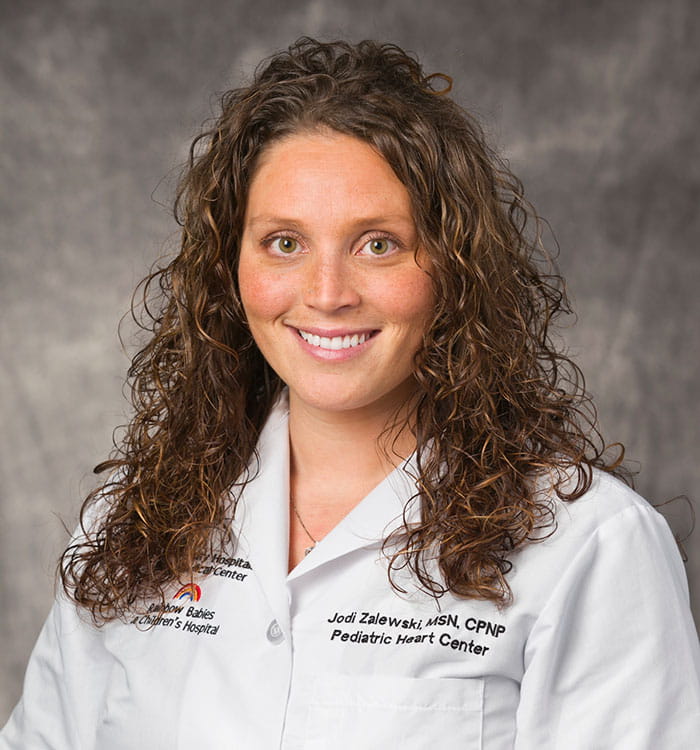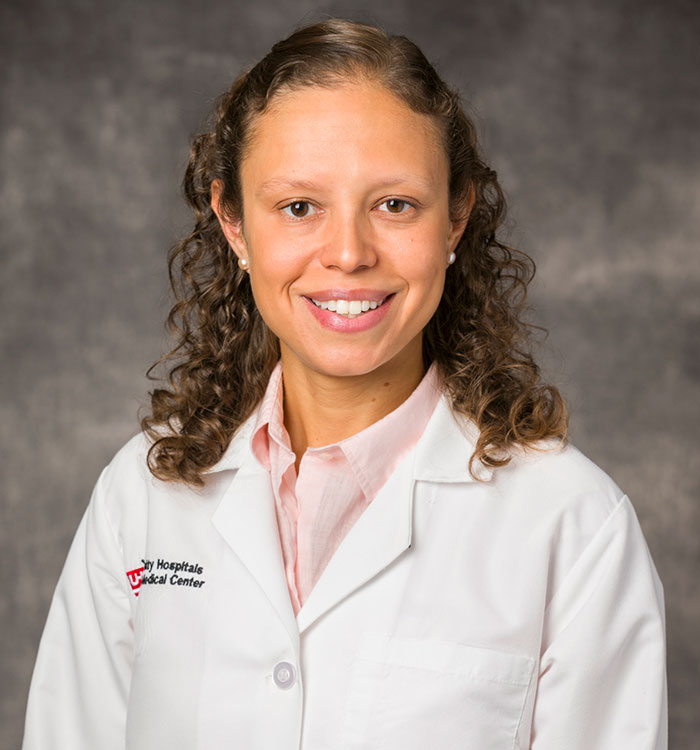UH Rainbow Babies & Children’s Hospital Adds Telemedicine Connectivity to Innovative Hearts at HOME Monitoring App
May 19, 2019
Jabber™ supports virtual monitoring for infants born with single ventricle heart conditions
Innovations in Cardiovascular Medicine & Surgery | Summer 2019
For Northeast Ohio’s tiniest heart patients, Jabber™ — an iPad-based app developed by Cisco — enables virtual house calls with parents or caregivers, providing day-to-day monitoring and increased peace of mind.
“These are our highest-risk babies,” says Jodi Zalewski, RN, MSN, CPNP, Coordinator, Single Ventricle Program, University Hospitals Rainbow Babies & Children’s Hospital. “If families have concerns, they can call and we can initiate Jabber. I am able to securely log on to Jabber to talk with them at home, take a look at the baby through the app’s video calling capabilities, and make sure we’re catching potential problems early.”
 Jodi Zalewski, RN, MSN, CPNP
Jodi Zalewski, RN, MSN, CPNP Sarah Plummer, MD
Sarah Plummer, MD“By offering 24/7 access to pediatric cardiology support, we are helping families cope during a challenging time,” Zalewski says. “This technology is making it possible for these babies to grow and develop outside the hospital setting while reducing the risk of life-threatening complications.”
Using a specially configured iPad, participating families input daily health details, including oxygen saturation, baby’s weight, and feeding behaviors. The remote monitoring platform replaces binders and worksheets of the past, allowing practitioners to visualize data in real time and spot downturns or strategize treatment plans prior to upcoming clinic visits.
For example, these infants are hard to feed by mouth and need to ingest more calories than a typical peer because they expend more energy struggling to eat. If weight parameters are not being met, the team can study the gathered data to consider medication changes, fortified formula options or the necessity for tube feeding.
“With careful monitoring, we’ve shown that these babies can be safely cared for at home,” says Sarah Plummer, MD, Co-Director, Single Ventricle Program, UH Rainbow Babies & Children’s Hospital; and Assistant Professor, Case Western Reserve University School of Medicine. “We’re able to follow babies closely while reducing the frequency of clinic visits, which improves quality of life for our families.” Additionally, emergency department visits are decreased, and exposure to ill patients in waiting areas is avoided.
UH Rainbow Babies & Children’s Hospital was the first pediatric heart program in Northern Ohio to provide the home monitoring system as one component of a comprehensive, multidisciplinary continuum of care. Funded through the hospital’s pediatric innovation program, the Hearts at HOME app was customized through collaboration with Charlottesville, Va.-based Locus Heath, a provider of remote patient care solutions. In addition to the iPad loaned by the hospital, families receive a pulse oximeter monitor and a scale, both gifted through the Cleveland chapter of Mended Little Hearts, a nonprofit patient support network.
To optimize care for these medically fragile infants, treatment is coordinated through multidisciplinary clinics offering input from surgeons, cardiologists, nurse practitioners, pediatric nurses, nutritionists, feeding specialists, neurodevelopmental experts, and social workers. Additionally, parental support and education is provided to reduce anxiety and empower families on their journey.
A CRITICAL TIMEFRAME
Infants born with only one pumping chamber require a series of open heart surgeries, known as single ventricle palliation, to reroute blood flow to compensate for their compromised circulation. “By definition, these babies are in heart failure,” Dr. Plummer says. “We know historically that the highest risk for complications is between the initial hospital discharge and second-stage surgery, which is usually performed around five or six months of age.” That interstage period is a crucial window for home monitoring, made possible by the combination of the Hearts at HOME and Jabber apps.
“Using this technology, we are able to ask the same questions we ask when families are here,” she says. “We can actually see the baby and communicate directly with parents to address any questions they have.”
Moving forward, Dr. Plummer sees opportunities to collaborate with other institutions that partner with Locus Health to aggregate data and continue to innovate methods of care delivery for the high-risk single ventricle population.
For more information about Hearts at HOME, call 216-844-1234.
Watch the video: Connecting Children to the Care They Need



